When it comes to precious wood, many people naturally think of mahogany. In fact, there are thousands of trees, and precious wood is not just a type of redwood. GET go this fast 20 common precious wood up gesture, not to mention precious mahogany wood only knew, no other words, can not properly loaded to force?
1, mahogany
In the international standard of mahogany, the species of the mahogany range is divided into "five genera and eight classes", namely rosewood of rosewood, rosewood, fragrant wood of Dalbergia, black rosewood, red rosewood The genus, the genus of the genus Dioscorea, the genus Lepidoptera, the genus Arachis, and the genus of the genus Diptera, and the mahogany include the current 33 kinds of wood.
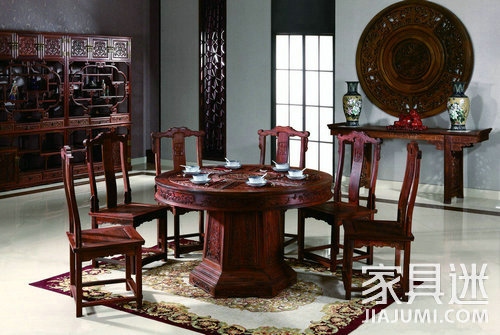
Red rosewood is called wood in Guangdong, north of the Yangtze is known as mahogany. A solid mahogany, rosewood-based precious common is one of rare species, mainly in production in India, Thailand, Burma, Vietnam, Laos, Cambodia and other Southeast Asian countries, China, Guangdong, Yunnan and islands of Southeast Asia have produced, it is hardwood. Heartwood orange, reddish brown, reddish brown, purple, purple brown to dark brown, uneven wood color, dark streaks apparent. Shiny wood, sour taste or flavor acid (a small number of rose fragrance), but also has a fine structure, texture staggered so on.
Mahogany many species but they have many common features. The red wood is hard, wear-resistant and sinks in water, and the high-quality wood is darker. The top quality of mahogany is steady, the wood is fine, the mahogany has new and old points, the old mahogany is darker, the color is lighter and has aroma. The new mahogany color is reddish and has a pattern. Since the middle of the Qing Dynasty, red sandalwood and huanghuali have become increasingly difficult to find. They began to import mahogany from Nanyang to replace it. At that time, it was known as the "purple scorpion". In the Qing dynasty, Jiang Yan, "Zhu Che Wen Wen Lu": "The sable is from the sea ship, like Rosewood.†The output of mahogany is large, with wide material width, beautiful color pattern and excellent material. It is widely used in the production of various types and styles of mahogany classical furniture. It is also suitable for making wooden combs, musical instruments, carving and decorative crafts, etc. value.
2, mahogany
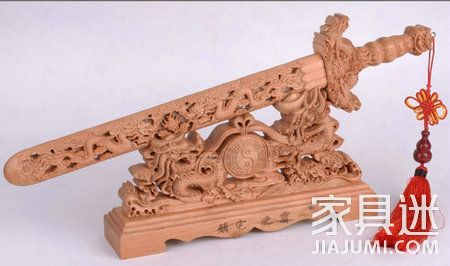
The mahogany wood is fine and the wood is fragrant. Mahogany has an extremely important position in China's folk culture and beliefs. Taomu is also known as “Dragon Wood†and “Ghost Terror†is the most widely used material for evil spirits. Legend has it that Kuafu chased the sun, and before he died, he threw out the god wood into a peach forest. China's earliest Spring Festival couplets are made of peach wood, also known as peaches. For thousands of years, Taomu has the idea of ​​disaster prevention and evil, known as Shenmu. Source: "An ancient selection of peach wood branches carved Taomu people, standing in the household to avoid evil." So far, folks still believe that mahogany products can drive away ghosts and evil spirits. In the Han Dynasty, the carved peach wood was hanged on the portal, called Taoyin. And peaches mean longevity, give birthdays to the elderly, and send a plate of birthday peaches to express the wish for the elderly to live longer and healthier. The reason why mahogany and its products have such divine power is to be planted in the mysterious concept that the ancients identified the peach tree as a fear of a hundred ghosts. It has the meaning of blessing peace and good luck in people's inner world.
3, ebony
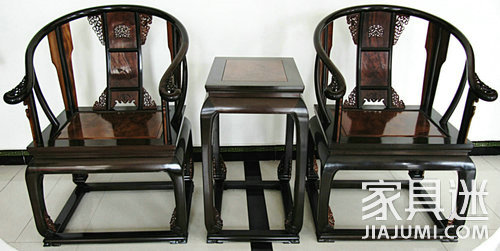
Ebony, commonly known as "gloomy wood" or "carbonized ebony", is unique to the scorpion, and is praised by the Sichuan people as "the spirit of Wanmu, the respect of Wanmu". Known as the "Oriental Shenmu" reputation. It has been thousands of years old. Only Sichuan has a rich reserve in the world. In the ancient times of the ebony system, a large number of original precious ancient trees (mostly trees such as alfalfa, nan, alfalfa, persimmon, mulberry, and Cyclobalanopsis) were buried under the ancient riverbed due to natural causes such as landslide earthquakes, floods, and crustal changes. Under natural conditions, after thousands of years of mountain rock extrusion, flood impact, through the physical and chemical effects of a large number of metal elements in river sand, the formation of plant "mummy", also known as the "big panda" in the plant world, is extremely precious. Cultural heritage. The carbonization process of ebony is unusually special, neither turning into coal nor turning into peat, but becoming a human treasure that has a high collection value. The ebony color is black and red, simple and luxurious, the texture is hard and delicate, the texture is fresh, the cross section feels smooth, non-corrosive, immortal, and unruly. It is an excellent raw material for making high-grade furniture, temple Buddha statues and handmade art. Its product texture is hard. Fine, colorful and pleasing to the eye, it has both high ornamental value and extremely precious collections. It is regarded as the treasure of the family and the evil spirits. It is cherished by the dynasties of the past, and the ancients "will rather ebony," Don't jewel a box." China has only discovered unearthed in Sichuan. Only Sichuan has a rich reserve in the world.
4, beech
Elm, Ulmaceae Ulmus, production of temperate deciduous trees, tall trees, all over the north, especially in the Yellow River Basin, everywhere. Elm wood sex tenacity, texture clear and accessible, moderate hardness and strength, general openwork relief can adapt, planing surface smooth, beautiful pattern string side, there is "wenge" pattern, for furniture and decoration use, elm by drying, shaping, carving mill painted, exquisitely carved lacquer handicrafts. Elm and beech produced in the South, "The North elm South beech," said. Width large elm wood, fine texture gentle, small deformation rate, carvings and many more rough-based.
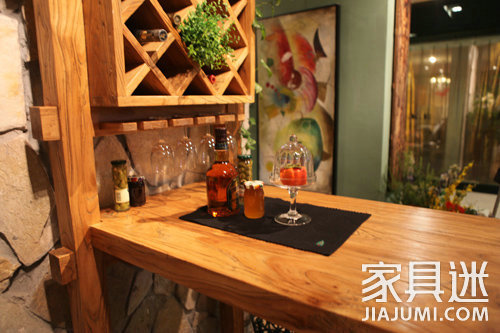
The eucalyptus has the distinction of jaundice and sable. The scutellaria is more common, and the wood is light yellow when it is newly cut. The color gradually deepens with the age; while the purple enamel is naturally black and purple, and the color is similar to the color of the old mahogany. The wood grain of the coffin is beautiful, the texture is tough, the texture is straight and rough, and the rustic natural color and charm unique to the coffin are all in harmony with the concept of the ancient people. Therefore, from ancient times to the present, whether it is in front of Wang Yutang or the backyard of the people, he sees its standing figure, bold and hearty laughter, embellished with decorative talents. The old coffin, which is praised by the elegance and the vulgar, has occupied a huge share of the market with its tenacious character, heavy character and reasonable mind, and won the unanimous praise and appreciation of everyone! The coffin represents not only a tradition, but also a culture, a taste, and a style. Therefore, the enamel carving jewelry is gradually being collected and enjoyed by more and more people.
Related reading: On-demand material: How to choose the common wood for home use?
5, jujube

The jujube wood is hard and dense, the iron bones are stalked, the wind is not smashed, the thunder can not be destroyed, and the wood grain is fine like sandalwood. Mosquitoes are not guilty and can avoid evil. The Buddha used King Kong as a magic weapon. The hardship of King Kong, the Buddha has the name of King Kong is not bad, the date pole is also known as the diamond bone, this is the supreme praise of the date wood, so it is regarded as a rare treasure.
6, Nanmu

Nanmu is a threatening tree species. Evergreen large trees, more than 30 meters high, breast diameter up to 100 cm. It is unique to China and is mainly distributed in the subtropical areas of Sichuan, Guizhou, Hubei and Hunan, with subtropical valleys, mountains and riversides. It grows slowly, has hard wood and corrosion resistance, and has a long service life. It is deep in neutral sun. Root tree species, there is no obvious decline in 300 years of life. Flowering period is May and June, and fruiting period is from November to December. Phoebe wood is light, invariable without cracking, and expensive. There are three kinds of nanmu: one is fragrant nan, the wood is purple and fragrant, the texture is also very beautiful; the second is jinnan, the wood grain has gold wire, which is the best kind of nanmu; the third is water nan, wood is better Soft, use it to make furniture. Jinsi Nanmu furniture is brightly visible in the golden silk, which is very beautiful. The ancient feudal emperor's royal and dragon chair thrones must be made of high-quality nanmu. At the same time, it is also a special material for the construction of royal palaces, mausoleums, gardens, etc. In the palace, the wooden beds and couches are often used, and the hardwoods are not available. This advantage. This species has been rare since the Qing Dynasty.
7, boxwood
Boxwood ("Yangyang Miscellaneous"), also known as: Mountain Yellow Poplar ("Changyan Rock Materia Medica"), millennium short, small yellow insert ("Classified Herbality"), Hundred Days Red, Evergreen, Bean Board, Boxwood, and Seeds of Boxwood. The same plant, the fine-leaved boxwood, also known as the yellow-spotted poplar, is produced in China and distributed in Shandong, Jiangsu, Fujian, Hubei, Sichuan, Yunnan, and Guizhou. Also used equally.
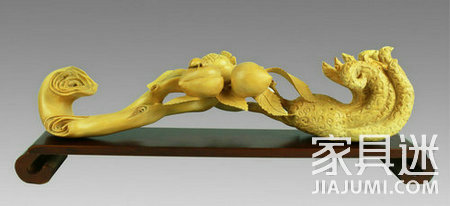
The king of the birds is called the phoenix, and the king of the wood is the boxwood. Boxwood is a shrub that does not grow in the soil. Instead, it grows on the rock wall covered with clouds in the mountains. It uses the dripping water and rain dew in the rock to grow nutrients. It grows in the environment without any pollution. It can be said that it is absorbed. The essence of heaven and earth. The growth of the boxwood is extremely slow, and it is said to be one inch long and is precious. Boxwood has no anise, suitable for engraving or making wooden combs and engravings, etc., for the desk to enjoy and play. The boxwood is tough, with fine texture and moderate hardness. It can be as beautiful as ivory carving after fine carving. As the ages are long, the colors are light and deep, simple and beautiful, unique and very cute. Boxwood is often used in combination with high-grade mahogany. It is difficult to make the whole piece of furniture. Once it is made, it is beautiful and worth much more than mahogany furniture. The boxwood has a faint scent, elegant and not glamorous. It is a kind of taste that can be completely described by fragrant, and also has the effect of sterilization and anti-inflammatory and hemostasis. In the mountain folks where the boxwood grows, the boxwood leaves are used as hemostatic drugs, and the boxwood branches are placed to repel the flies. In the Chinese folk, boxwood products have always been regarded as a top-notch product of intoxication, evil spirits, and auspiciousness.
The boxwood has two kinds of tender yellow and beige. It is generally believed that objects made of light-colored wood are easily stained if they are not painted. However, the boxwood has the same characteristics as the lotus leaf, and it is not stained with mud. Scientists have developed nanomaterials based on the characteristics of lotus leaves. The structure of boxwood is also nanometer.
8, green sandalwood
It is known as jade sandalwood or green sandalwood in China. The green sandalwood is mainly grown in the submerged areas of the suburbs (mainly Africa and South America, India, Vietnam, and a small amount of Yunnan in China). The growth is extremely slow, not counting It can't be made into a material for a hundred years, attracting the aura of the heavens and the earth, and collecting the essence of the sun and the moon. It is the rarest wood in the world, and the rarest among the rare and precious wood species. Tan Sanfan is the meaning of giving. Gao Song often makes rosary beads and wooden fish ritual Buddhas with green sandalwood, so it is called Sheng Tan, and the South American indigenous people are used as Shenmu.
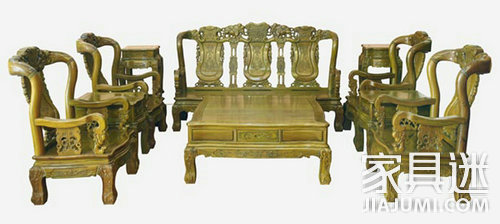
The green sandalwood wood is tight and hard, the surface is hard and wearable, the poison is not invaded, the erosion is immortal, and it can avoid evil treatment. People often use it as a mascot to ensure peace and good fortune. The green sandalwood has an olive-green straight strip texture, which is clearly visible. The circle is like a long-lasting annual ring, exuding the ancient pure atmosphere and the dreamy blurred luster. Green sandalwood contains a variety of rare elements that are beneficial to human body function. It can effectively stabilize the brainwaves of the human body, make the mood stable, peaceful, quiet, and help sleep, and help the meditation. Green sandalwood wood is soft and elegant, long and not pungent, long-lasting and not dry sandalwood fragrance. The fragrance is fragrant and eternal, and the heart is calm and calm, and the Chinese medicine believes that the sandal scent can play the role of centering, soothe the nerves, refreshing the brain, eliminating evil spirits, and sputum. The color of green sandalwood is colorful and changeable. The color changes from light yellow to green with time, and emerald green is superior and extremely noble. It is often wiped with cotton cloth to increase its smoothness, smoothness and fineness, and it is like jade. It has become more and more beautiful for a long time.
Green sandalwood is very limited in its natural stock due to its slow growth. In the eighteenth century, Europeans launched the South American War in order to obtain green sandalwood resources. At present, governments have formulated policies to limit harvesting. At present, green sandalwood carvings have been listed as traditional arts and crafts protection varieties by the state, with collection and appreciation potential.
9, red sandalwood
The name of botany should be sandalwood rosewood, also known as qinglongmu, which belongs to the genus of the genus of the genus, and the subtropical evergreen tree. The red sandalwood has long been known as the best in the wood, and the ancient and modern notes by Cui Leopard of the Jin Dynasty. Record: "Purple nanmu, out of Funan, color purple, also known as red sandalwood." There are many places of production of red sandalwood, mainly produced in the South Sea Islands, China, Guangdong, Guangxi, Yunnan also have a small number of growth, about 800 years can be completed, heartwood orange , long time turned into black purple or deep purple. The texture is dense, shiny and beautiful, and the pattern of the annual ring is agitated, slightly aromatic, and the wood is hard and heavy. It sinks immediately in the water, and the volume of one cubic meter of wood can reach 703 kg. The brown eyes are very dense and there are no scars. It is purple-black, with purple bubbles in the wine, and can be glued to the bowl.
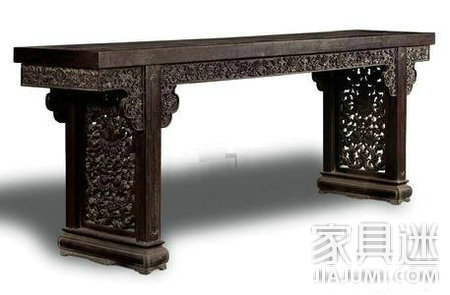
The color of the rosewood is as deep as lacquer, and the brown eyes are thin and dense. It is like a cow's hair. It is called a cow's hair. It will produce a horny luster for a long time. Looking at the red sandalwood from some angles, there will be a satin-like glare. The amount of red sandalwood is very heavy, much larger than the similar redwood. The rosewood is stable, not cracked and not warped, easy to engrave, especially easy to micro-carve and slash, and this is difficult to achieve. Therefore, the furniture with a fine weight and heavy weight can be initially judged as a rosewood work. In addition, the red sandalwood has no big material, as the saying goes, "Ten Tan Nine." The rosewood grows into a large material, and the central part is quasi-hollowed, so the expensive rosewood furniture is also carefully calculated. Go to the Forbidden City to see, the royal red sandalwood case, a one-foot wide core or three puzzles, you can know the rareness of this kind of wood. In addition to carvings, the rosewood furniture also has a light texture to express the material.
The use of purple illuminating utensils has been used for a long time. After the finished furniture and sculptures are black and lacquered, there are few textures, and the royal style is gorgeous and restrained. The Eastern Han Dynasty saw the record in the early years. In the Ming Dynasty, rosewood was favored by the palace, used to make furniture and furnishings. The domestic sandalwood was quickly lighted and sent to the overseas collection. The world's rosewood can be said to be mostly collected in China, and the royal store is stored. A lot of rosewood and rosewood are concentrated in the Forbidden City in Beijing. Until the middle of the Qing Dynasty, the inventory side warned that the supply was interrupted and the red sandalwood was in short supply. Therefore, the furniture after the middle of the Qing Dynasty was replaced by mahogany.
Not only has China always cherished rosewood, but people in Europe and the United States also regard rosewood as the most valuable wood in the world. According to legend, one and a half feet of the rosewood 榔 model in front of Napoleon's tomb, the viewers are all surprised. The rosewood woodware produced by the two generations of the Ming and Qing Dynasties enjoys a high reputation in the international art market and is deeply cherished by collectors. As early as the end of the Qing Dynasty, Westerners came to China to see the red sandalwoods and bought them out of the country. Due to the difficulty in transporting large-scale furniture and the inconvenience of carrying, the Chinese rosewood tools of European and American collectors are mostly small pieces.
Although there are many kinds of rosewood trees, they have many common features, especially the colors, all of which are purple-black. The use of the natural characteristics of the rosewood furniture is based on the light. Because of the deep color of rosewood, it looks stable and beautiful. If it is too much, it will cover the texture and color of the wood itself, just like a snake.
The method of identifying rosewood is to gently rub the surface of the wood with an alcohol cotton ball. If the cotton ball is purple-red, it is red sandalwood. You can also scrape a little wood from the wood and dip it in the wine. A red bloodline is a red sandalwood. The old red sandalwood does not fade in the water, and the color is rubbed off; the new red sandalwood fades after immersion in water, and the color does not fall.
In the rosewood forest, there are also "Chongqing rosewood, Andaman rosewood, Hedgehog rosewood, Indian rosewood, large fruit rosewood, sacred rosewood, bird foot rosewood", etc., although these tree species have the word "red sandalwood". But in fact, they are not really red sandalwood. In the national standard of redwood, they belong to rosewood.
10, rhinoceros horn rosewood
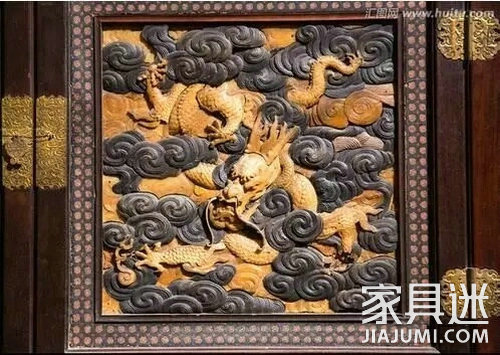
Black and yellow sandalwood in East Africa is called rhinoceros horn or red sandalwood. It is neither ebony nor red sandalwood. It belongs to black rosewood, which is distributed in Tanzania, Senegal, Mozambique and other places in eastern tropical Africa. The shape of the wood is ugly, twisted and hollow, but the material is more prominent. Black and yellow sandalwood in East Africa is similar to the fineness of ancient ebony. It has a sense of calmness and solemnity. The wood color is black and black. After the wood is polished and polished, the reflection is very good, and the light can be seen. The stability of the wood is very good, it is not easy to shrink, not easy. Warping cracking; growth wheel is not obvious. The smell of wood is very light, basically no acid aroma and spicy taste, no special taste; slightly oily and sexy; wood is very resistant to corrosion, slightly resistant to termite attack. The texture of black Dalbergia in East Africa is hard, difficult to process, fine texture after finishing, small color change, wood grain is not obvious, but it can also be seen that the black stripes of silk swimming are looming, subtle and not unassuming, there are so-called visual and tactile The feeling of jade or rhinoceros horns.
In the domestic market, many ebony or red sandalwood are used to make wood carving crafts such as wooden combs, and also used in the manufacture of Chinese classical furniture. The black and yellow sandalwood products of East Africa are delicate and solemn and elegant.
11, red sandalwood
Red sandalwood, balsamic genus. The wood has strong luster, slightly bitter taste, slightly aroma, reddish brown to purple reddish brown, with light color stripes, and the growth rings are not obvious. Some pipes contain resin or sediment, wood is heavy, high strength, wood is resistant to corrosion, and anti-ant Strong, antibacterial, insect damage, processing is slightly difficult, but the cut surface is very smooth.
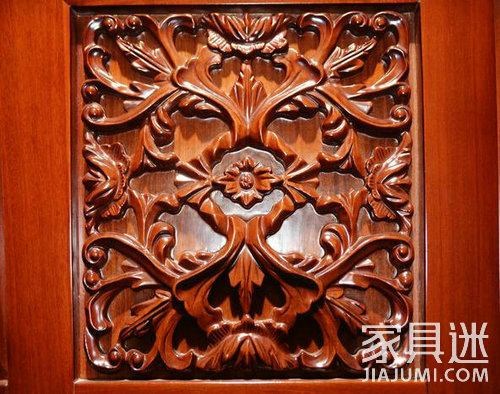
Another red sandalwood is a common name for the genus of iron in the genus Sylvestris. Wood is dull, no special smell and taste, reddish brown, light sapwood, straight texture, even staggered, fine structure, uniform, heavy wood, high strength, corrosion resistance, anti-termite, good wear resistance.
12, ebony
Ebony (striped ebony EBONY) is a persimmon tree, which is produced in Southeast Asia and other countries. It is listed among the world's famous woods. It has the reputation of “king of the wood†and the leader of the mahogany family.
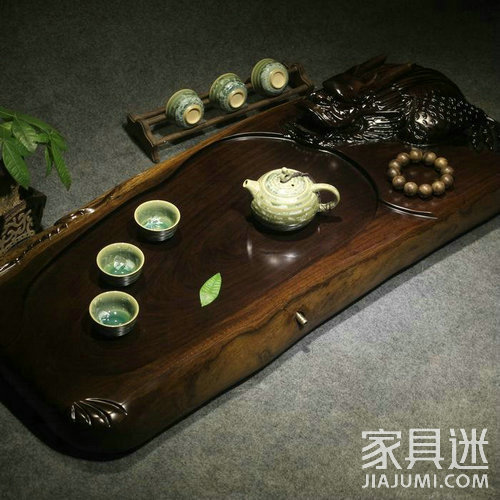
The growth environment of ebony is extremely harsh. It takes hundreds of years to produce, and it only grows an annual ring every five years. It is a foreign body in nature. The ebony heartwood has a distinct distinction. The sapwood is white (with yellowish brown or grayish gray) to light reddish brown; the heartwood is black (chaotic black or slightly greenish) and irregular black heartwood (the stripes are arranged in shades). The ebony wood is fine and hard, and it sinks into the water. It does not deform after drying, and its color is calm and dignified. It is full of oil and has a metallic luster, which highlights its elegant luxury and outstanding value in wood. Ebony has no special smell, mosquitoes do not invade, and it has the effect of warding off evil and rickets. People often use ebony as a mascot to ensure peace and good fortune.
Ebony is extremely wear-resistant and corrosion-resistant. This wood can be used for hundreds of years and is the first choice for handed down furniture and objects. Because of its special material, it is necessary to be able to make furniture. It must be grown for more than four hundred years. It is extremely precious and rare. It is a symbol of wealth. It is a symbol of top status and has a very high collection value. At present, countries have limited harvesting and set high tariffs to protect the endangered ebony resources. The increasing scarcity of natural resources makes ebony have a strong potential for preservation and appreciation.
Indonesia's superior Sulawesi and Kalimantan ebony is the best ebony in the world and is Indonesia's national treasure. Banna ebony is one of the hardest trees in China. It was discovered in the tropical jungle of Xishuangbanna in 1979. Its wood structure is extremely dense, the texture is staggered, and the heartwood is dark brown with a magnificent pattern. Its hardness and strength are extremely large. If a piece of sapwood is put into the water, it will sink into the water like a lead. Now the Banna ebony has been listed as an endangered species and has been protected.
13, iron birch
Sandalwood is very hard, but they are still hard but iron birch. Iron birch is the hardest tree in the world. The bullet hit the tree as if it were on a thick steel plate. The wood of iron birch is twice as hard as ordinary steel, three times harder than oak, and in some cases can be used as a substitute for steel for the defense industry.
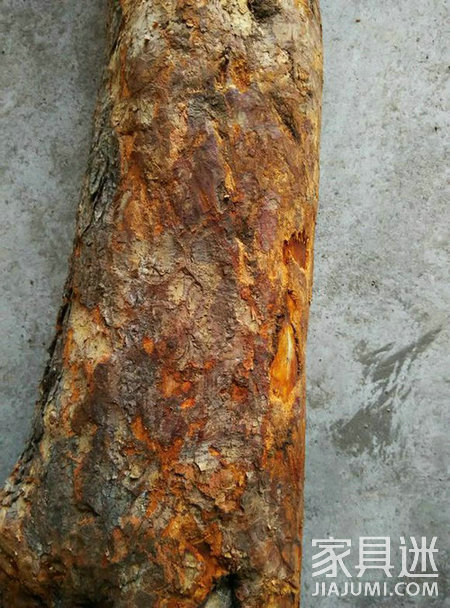
The iron birch is about 20 meters high and has a breast diameter of about 70 centimeters. Its life span can be as long as 300 years to 350 years. The iron birch is very hard and sinks into the water. Even if it is soaked in water for a long time, the inside can be kept dry for a long time. The bark is dark red or nearly black but with white spots on it. Its distribution area is very narrow and only grows in areas bordering North Korea. In addition, there are also distributions in the southern part of the former Soviet Union and southern Korea. Therefore, iron birch is not only the hardest tree in China, but also the hardest tree in the world.
14, chicken wing wood
Chicken wing wood is a kind of rosewood with chicken wings ("V" shape) on the string cut surface of wood heartwood. Also known as eucalyptus, eucalyptus, iron knife, Guangdong area called "Hainan Wenmu", there are "red bean wood" and "Acacia" alias. Produced in China and Myanmar, Thailand, India, Vietnam and other Southeast Asian countries. The wood is cut out in bright yellow and turns brown or dark brown when exposed to air. The porous material and the tube hole are small, containing black gum, sediment or invading body. Although the wood structure is thick, the cut surface pattern is beautiful, and the black, white and purple colors in the pattern form the reed rooster feather, so it is called chicken wing wood. . Chicken wing wood is famous for its remarkable and unique texture. It has always been loved by scholars and consumers. "Guangdong Xinyu? Hainan Wenmu" recorded "Acacia wood": "There is a scorpion-like wood, which looks like an iron pear. It is very resistant to soil. The big one is sawing it with a fine flower cloud. There are yellow and purple points, and also chicken wings, ... like the text. "This kind of acacia wood with the name of "chicken wing wood", the wood is heavy, shiny, smooth cut surface, chic pattern, can be used for high-grade furniture and For craft carving, special decoration and inlaying. Because of its hard wood, it is difficult to process and the price is higher than that of ordinary mahogany furniture.
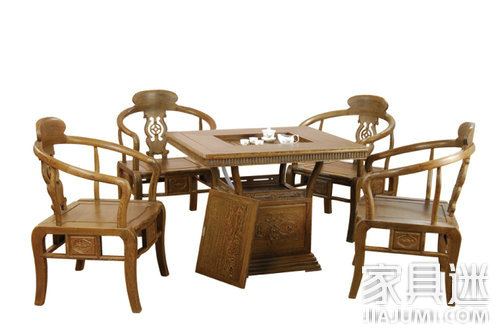
Chicken wing wood is easy to distinguish from other redwood species, but the actual market is good and bad, and it is difficult to distinguish. The new and old parts of the chicken wing wood, the new chicken wing wood is rough, purple and black, the texture is often turbid, the stiffness is not rotating, and the wood is sometimes easy to smash and smash, Cao Zhao, "Ge Gu": The eucalyptus is from Xifan, and its wood is half purple-brown, with crab claws inside, half pure black, such as ebony. The price is high. Xifan is a camel nose and is not dyed with fat. The target, not the big one.†The old chicken wing wood texture is delicate and dense, with purple and brown shades of crab claws, especially the longitudinal and slightly oblique profile, slender floating, giving the feathers a feeling of shining, high density, Shen In the water. Compared with huanghuali and red sandalwood, the chicken wing wood has less yield, and the materialing period takes hundreds of years. The wooden texture is unique, so it is cherished by the world for its small amount of living and beautiful and beautiful.
15, ivory wood

Also known as Ryukyu ebony, due to the slow growth of ivory trees, the heartwood is dark black and shiny, and the texture is hard. It is an excellent craft material and can be used as decoration and ornamental. Therefore, ivory trees native to the Hengchun Peninsula and the coast of Lanyu Island are often stolen, making their number greatly reduced and extremely suitable for conservation.
16, cherry wood
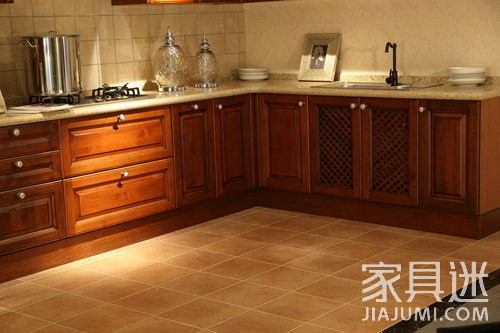
The color of the cherry wood heart is from red to brown, and the color becomes darker after sun exposure. On the contrary, the white wood is milky white. Cherry wood is prolific in the cold regions of northern Europe and North America. The cherry wood has fine and even straight lines, smooth texture, bright and delicate color, and naturally contains brown heart spots and tiny gum nests. Cherry wood has medium density, good wood bending properties, low rigidity, medium strength and vibration resistance. The good coating properties of cherry wood are beyond the reach of other tree species, and its uniform wood texture is excellent. When you first buy, the furniture will show a light red color, but the color will gradually become darker over time. The longer the age, the darker the color will be. Cherry wood is very popular, it is often used to create a variety of decorative furniture, musical instruments and wooden combs. As early as the 17th century, cherry wood was a favorite material for carpenters and decorative craftsmen. In English proverbs, it is a treasure.
Related reading: What is the difference between Southwest Birch and American Cherry?
17, walnut
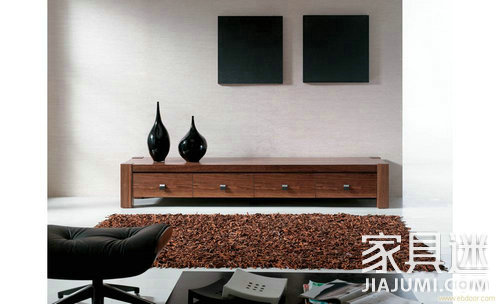
The white wood of walnut is milky white, and the heartwood is light brown to brownish black, with occasional purple cracks and darker stripes. Walnut is generally sold after cooking to make white wood discoloration. Its wood grain is usually straight wood grain, and it also has corrugated and curved wood grain, which produces attractive and decorative round shape and is resistant to corrosion. Extremely strong materials, even in a corrosive environment, are one of the most durable woods used in combination with light wood to produce a contrasting wood.
18, rouge
Teak is commonly known as rouge wood; mainly distributed with Burma, Thailand, etc., characterized by straight or slightly interlaced, medium to thick, uneven, medium weight, medium density, not easily deformed, waterproof, very resistant to corrosion, very small shrinkage, after drying Stable size and wear resistance.
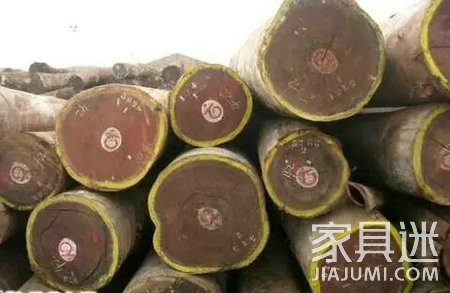
In European countries, teak is used to make the most luxurious yachts. The Titanic deck is made of teak. The centuries-old cathedral and ancient buildings are also made of teak flooring. Teak is very precious. It has been grown to a minimum of 50 years. In the natural environment, the best place to produce is only 1 to 5 trees per acre. It also contains extremely heavy oils, which are kept invariant and have a special aroma that can drive snakes, insects, rats and ants. Even more amazing is that its planed surface color is golden yellow by photosynthesis, and the color will be more beautiful with time.
19. Huanghua Pear
Rosewood is produced in Guangdong and Guangxi, and there are also outputs in Hainan, China, but the quantity is not much. "The Museum of History" said: "The pears are produced in Guangxi, a flower palm tree, leaves like pears and no flowers, wood color red purple And the texture is delicate, can be used as utensils, tables, chairs, and textbooks." The wood grain has a ghost face, but also a raccoon spot, also known as "flower raccoon." The old man is a tattoo, and the tender one is straight. The wood knot pattern is like a money, the color is bright, the texture is clear and beautiful, and it can be used as furniture and stationery. Rosewood has the distinction of old pear and new pear. Old pears, also known as huanghuali, are light yellow to purple, with a clear texture and aroma. The new pear is also known as the grass pear, the wood color is reddish, and the texture color is slightly worse than the old pear.
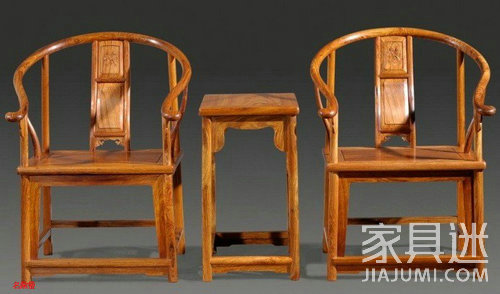
The name of Huanghuali, produced in Hainan Island, is the name of Dalbergia sinensis. It is also known as fragrant wood, fragrant mahogany, flower palm, fragrant branch and rosewood. Dalbergia odoratum is a rare and endemic tree species in China, which grows in plains and hills below 600 meters above sea level. The wood color is orange-yellow, and some are reddish-purple. The heart material is hard and extremely corrosion-resistant. The cut surface is smooth and the texture is beautiful. The aroma is enduring. The common hibiscus on the huanghua pear has a deep and shallow pattern of beautiful horns. "grimace". After the orange yellow huanghua pear is polished, the jade texture is strong and lovable, and the tiger stripes are more rare. Because the texture of Huanghua Pear is elegant and gorgeous, it is made into a piece of furniture such as precious furniture or wooden combs and pen holders. The craftsmen use the whole body to clean and handle, and do not make carvings to highlight the natural beauty of wood texture, which is very collectible.
Hainan huanghuali is also known as "buckwood". In the "Compendium of Materia Medica", it is called scent, and its woody water can lower blood pressure and blood lipids, and it can make pillows and promote blood circulation. Its wood distillation oil aroma is not volatile, it can be used as a deodorant. Huanghua pear is very easy to survive, but it is extremely difficult to become a material. A tree with a thick bowl can only be used for the size of a rolling pin. The real material needs a growth period of hundreds of thousands of years. Its hard wood is the finest material for making classic hardwood furniture. Huanghua pear products have a great appreciation value.
20, agarwood
Agarwood is a wood containing wood resin of Rutaceae. Agarwood is an evergreen elm, with oval or lanceolate leaves and white flowers in spring. Wild or cultivated in tropical and subtropical regions. It is cultivated in Taiwan, Guangdong and Guangxi. Hong Kong is known as Hong Kong because of its agarwood production. It is also known as Hong Kong and Xianghai. It is distributed abroad in India, Indonesia, Vietnam, Malaysia and other regions. This kind of black, heavy, and valuable wood than gold jewelry has many aliases: earth agarwood, white wood incense, tooth tree, daughter fragrance.
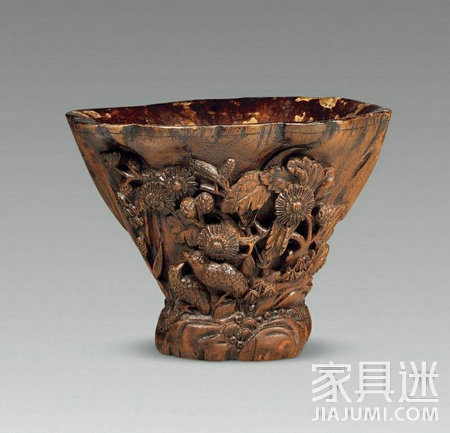
The agarwood is 6m to 20m high. It is mostly hat-shaped, rod-shaped or flake-shaped. The surface is brown. It often has black and yellow interlaced textures. It is smooth and bright, solid and heavy, difficult to break. brown. It can sink in water or semi-sink and semi-float. It has a special aroma, bitter taste, oil oozing when burning, and the aroma is very strong.
The domestic agarwood, also known as Hainan agarwood, is also called “Gannanxiang†and “Qinanxiang†after processing. The identification of the two mainly depends on whether it can sink in water or half float. I like the warm and humid climate, because of the resin, the flavor is rich and the price is high. In the Song Dynasty, Su Shi wrote "The Scriptures and Herbs" records: "Agarwood, Green Gui, Maoxiang, and the countries of Hainan and Jiao, Guang, and Yazhou." Cai Wei said in "Tieweishan Cong Tan": "City of the city is not Zhenla, Zhenla is not like Hainan Lidong. Lidong is also a million-year-old from Shandong, and it is the best in Hainan. It is said that Hainan's agarwood has been famous and expensive.
Agarwood is a valuable Chinese herbal medicine. According to the medical literature, it is used to treat qi and chest fullness, angina pectoris, accumulation of phlegm, stomach cold and vomiting, cholera, men's cold, nausea and so on. disease. In traditional Chinese medicine, traditional Indian medicine, and Tibetan medicine, the agarwood has been used for thousands of years. At the same time, its resin can also be made into spices, wood can be made into incense, and bark can be used for papermaking. It is widely used and has high economic value. Therefore, agarwood is widely used in many countries and regions of the world. Agarwood is mild, mild, non-toxic, has the effects of qi and analgesia, warming and stopping vomiting, and qi and asthma. It has obvious curative effect on treating abdominal distension, stomach cold, kidney deficiency and asthma. China has listed agarwood in the national key protection. The Wild Plants List has become a rare and endangered tree species protected by the national secondary level.
Where can I get standard Metal Lockers for sale?
Standard metal lockers means traditional powder coated steel lockers.
In public environments,you will find School Lockers, Staff Lockers , Small Lockers are this series.
These types of cabinets are produced in different sizes and colors and are mostly made of metal and all have a key type lock, code, electric lock or so on.
Wide is a common widths about 12 inches (300mm.), and 15 inches (380mm.) & 18inches (450mm) have become more common recently.
Most standard lockers are approximately 18 inches (450mm.) deep, and 16inches(400mm) is very common now.
The height is standard, usually about 6 feet (1850mm.), so this does not vary either, unless non-standard height is required.
3 Tier Lockers,Single Locker for Sale,Metal Lockers for Sale Near Me,traditional lockers
LUOYANG SHIDIU IMPORT AND EXPORT CO., LTD , https://www.shadow-cabinet.com
![<?echo $_SERVER['SERVER_NAME'];?>](/template/twentyseventeen/skin/images/header.jpg)